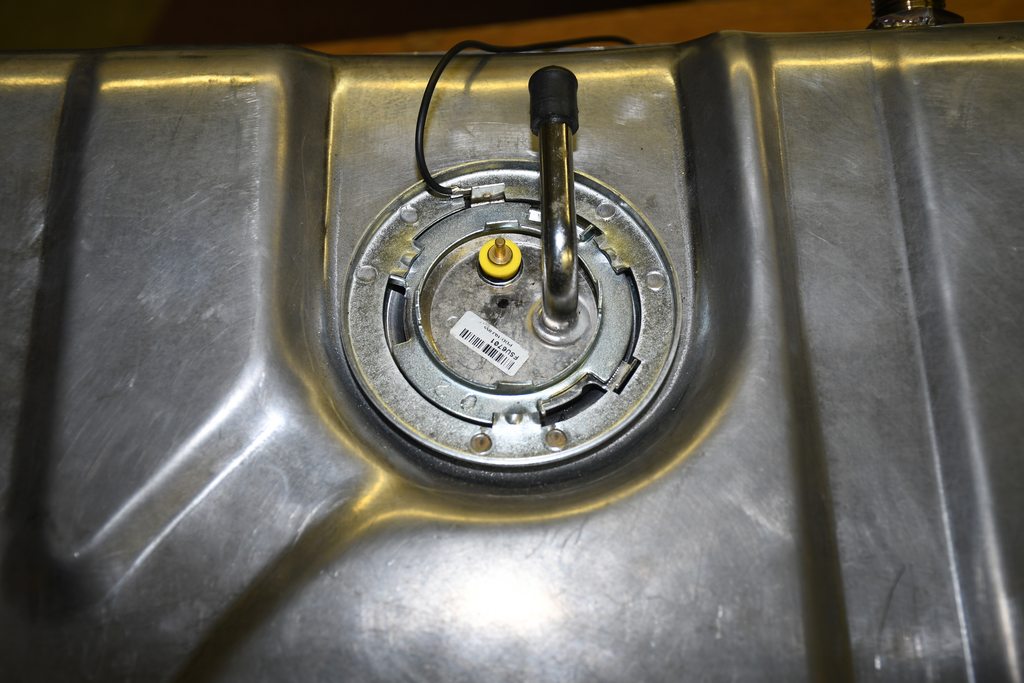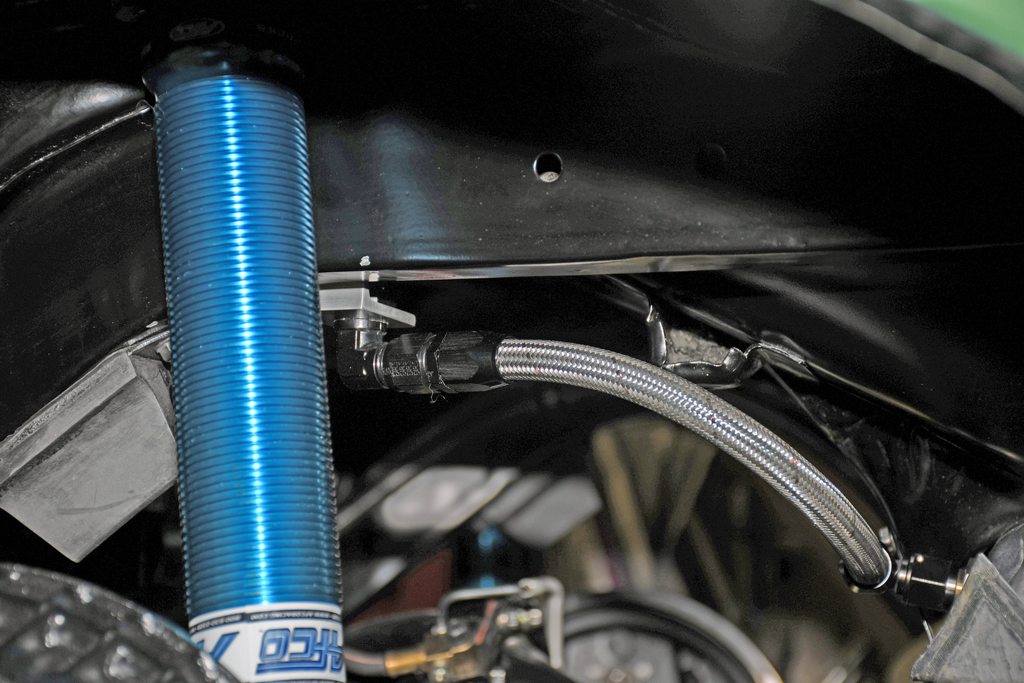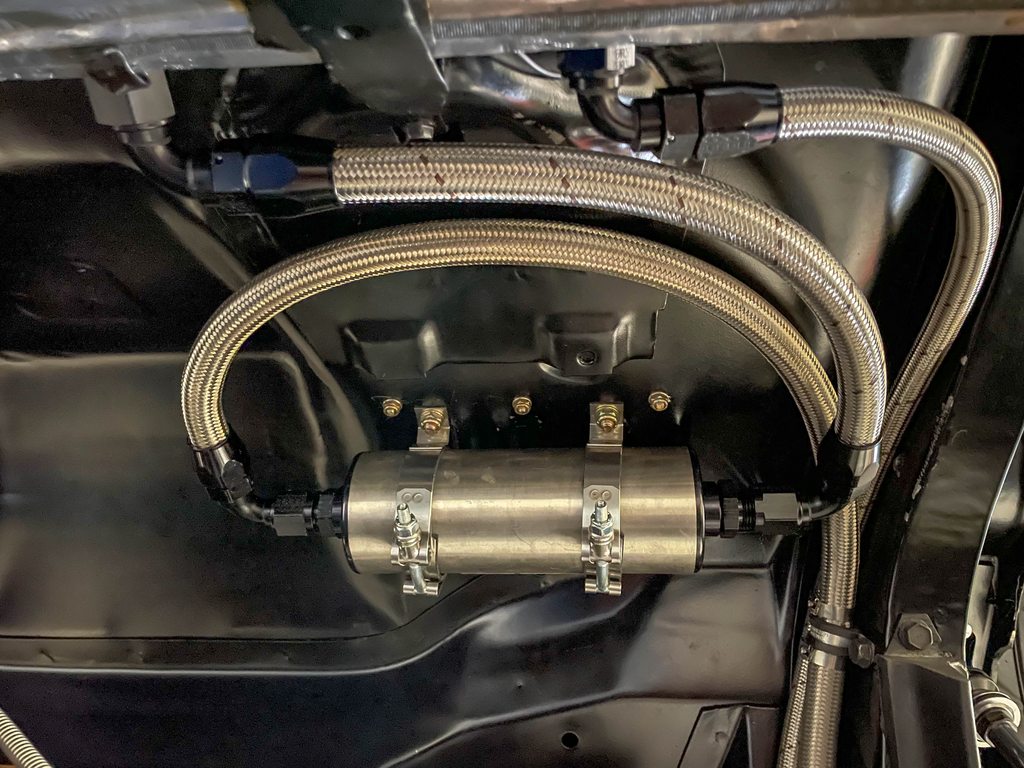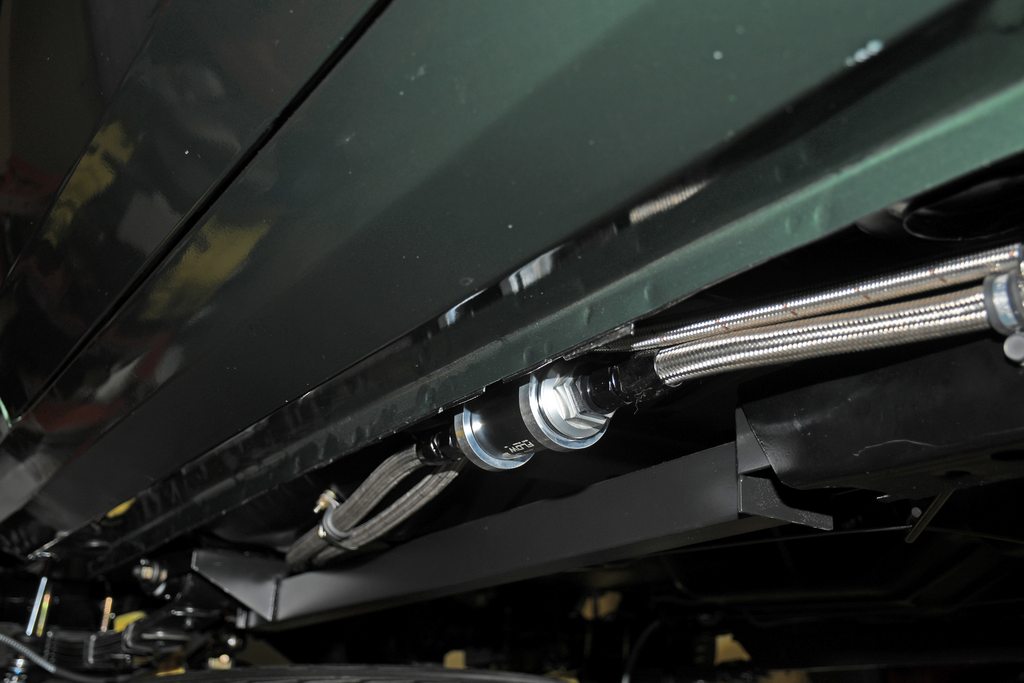Moving along (and hopefully, this thread won't cluttered up with 9-inch versus 12 bolt arguments or other "stuff" down the road), I worked on the fuel delivery system. It's been a sort of work in progress. I'll explain later...
The main premiss here was to follow what others like "stock appearing" racers use. I totally dig that idea: I didn't want a fuel cell. I didn't want a sump in the tank. I wanted the car to look closer to stock:

Some of the FAST folks are using Holley Hydramats in their gas tanks. It is heavily used in off road racing applications too. Basically, a Hydramat is a wicking agent. It absorbs fuel.

Here's a closer look:

There are a number of different choices for Hydramat configurations. Mine is setup to accept a honking -10 AN (5/8-inch) pickup. It is held to the floor of the gas tank by way of four rare earth magnets. Do they hold? L-O-L. I spent well over an hour trying to pry two apart. To move them around to where I wanted them in the tank, I used a piece of wood doweling.

Speaking of the tank

, This is a new Spectra tank. I cut that hole in the top to install the Hydramat.

I fabricated a cover from aluminum. When I did this, I decided I needed an easy to find gasket that is resistant to fuel. What you see is the baseplate gasket for a Holley Dominator carb.

Outback, I had a friend TIG weld a -10 AN bung to the top of the tank for the feed line, along with a -8AN bung for the return line, as well as a -8AN bung for the vent. The tank uses a non-vented cap. Here's a pic of the feed and return line AN bungs:

In order to get the Hydramat in the tank and not destroy the skin on my arm, I duct taped the opening:

Here's a peak inside the tank. The Hydramat sits alongside the fuel level sending unit. I simply cut off the original pickup tube and plugged the OEM sender fuel line (more later).

A big issue is finding hose that can be immersed in fuel. Believe it or not, AN hose doesn't like being immersed and neither does a wide range of OE-style hoses. The line must be flexible though. After a ton of research, I came up with this (below). It is hose that is used for things like snowmobiles, garden tractors and so on. It's capable of "living" inside gasoline. Acquiring it in -10 wasn't exactly easy. The fittings are from Earl's. The hose clamps are stainless steel jobs from Breeze (made in the USA). I use this same hose to handle the fuel line return inside the tank. It's not a good idea to allow the return line to spray inside the tank. Instead, the line should be on the tank floor:

Here's the tank top plate sealed up:

I blocked off the OEM style fuel pickup line internally and capped it. This way, the fuel sender still works:

This is the -8AN (1/2-inch or so) fuel vent line. You can't see, but there is an AN breather fitting on top of the 90-degree fitting. I made a bracket out of aluminum to mount the vent line.

This electric pump is a recent (this past week) change. I originally assembled the car with an off-shore Holley Marine mechanical pump, an Enderle mechanical fuel injection by-pass valve and a composite fuel pump pushrod. It all worked a-ok, but it wasn't consistent. The car would run nicely and then (in almost a heartbeat), the fuel level in the floats pretty much went out of control. I believe the huge mechanical pump I was using was overwhelming the pintle in the by-pass valve. Additionally, I was concerned about the longevity of the composite fuel pump pushrod (pretty much mandatory with a billet roller cam like I'm using). The big Weldon in-line electric pump along with a Weldon regulator is the ultimate solution. That Weldon pump will pull a prime (some users claim it can pull a prime in something like 6-feet, which is seriously impressive!). Weldon's regular business is manufacturing pumps and fuel system parts for aviation. They have good idea of what's going on....L-O-L. By the way, there's a bit of camera distortion here. I could not plumb the pump directly from the bung to the feed line, hence this layout. The reason it couldn't be done is because of minimum bend radius of AN hose. Bend it too tight and it will kink (and consequently be turned into junk). Here's the pump and return line setup:

Moving forward, the Nova has a high flow -10 AN Holley billet fuel filter inline. The Hydramat acts as a pre-filter, while this is the after-filter:

I used aircraft clamps to attach the line and stainless steel band clamps to tie the pressure (feed) line to the return line:

At the firewall, the hoses run over the inner fender to the front of the car. I don't like hoses that route close to the headers, hence this layout. I've used it in a number of builds and it works great.

The fuel and return lines run to this bulkhead under the stock style battery tray. The bracket is a simple 90-degree piece I built, and the fittings are bulkhead style. You can't see this when the battery tray is installed. By the way, I pressure test each hose after assembly. Easier to fix it now than later. Upstairs, the car is now getting a Weldon fuel pressure regulator with a return. I'll update that down the road:

That's all for now...